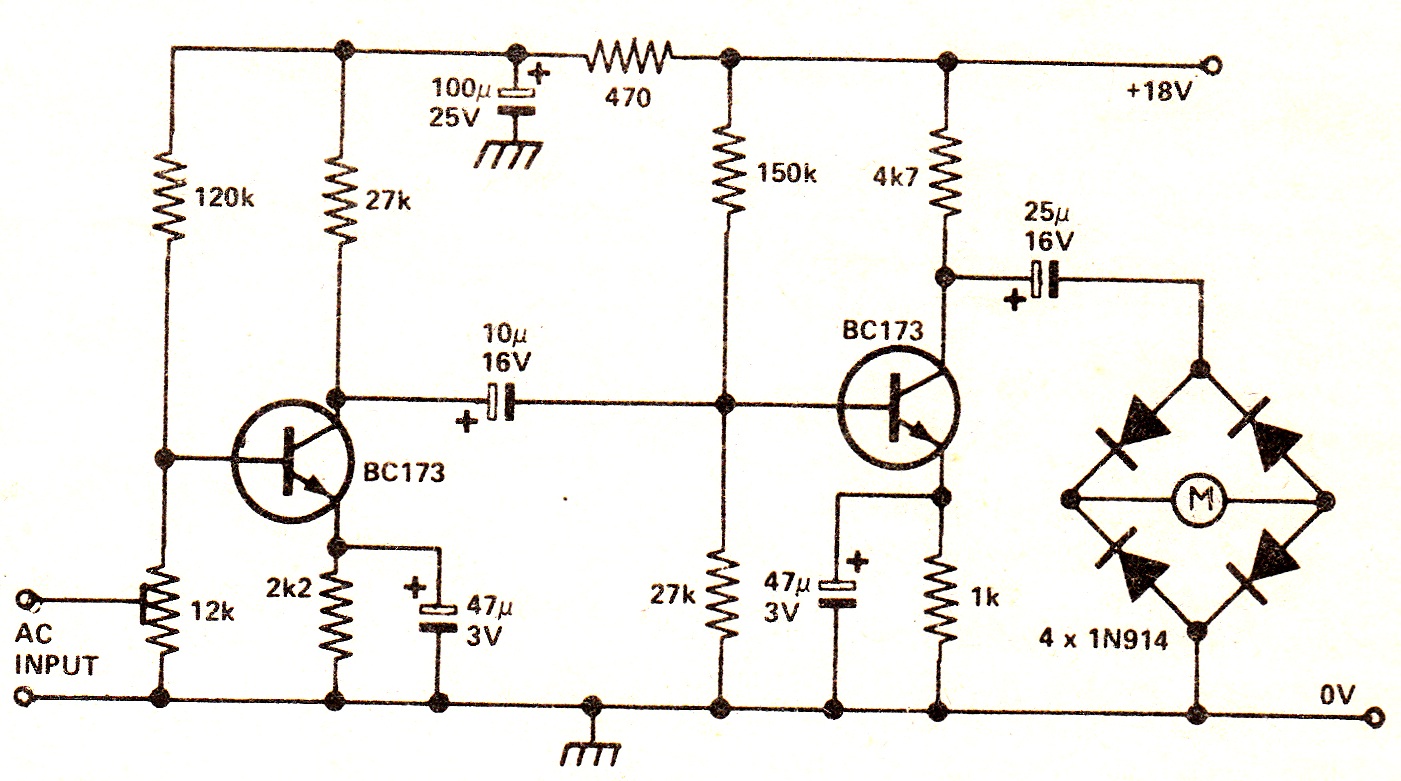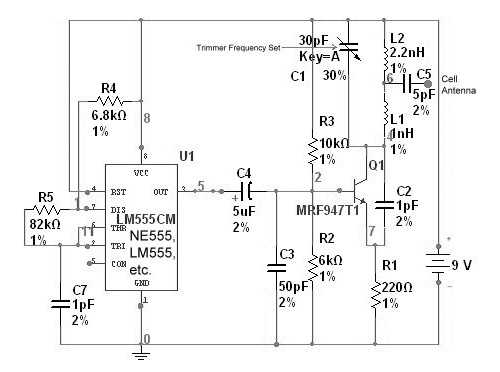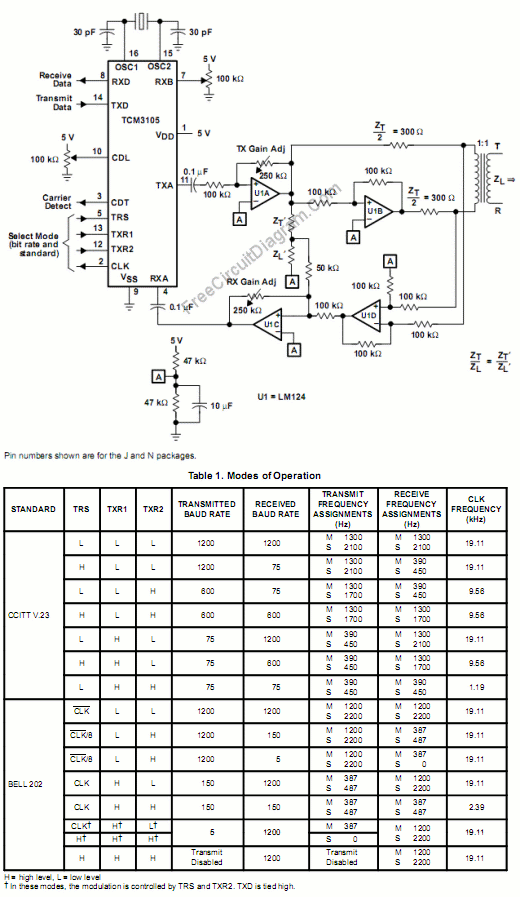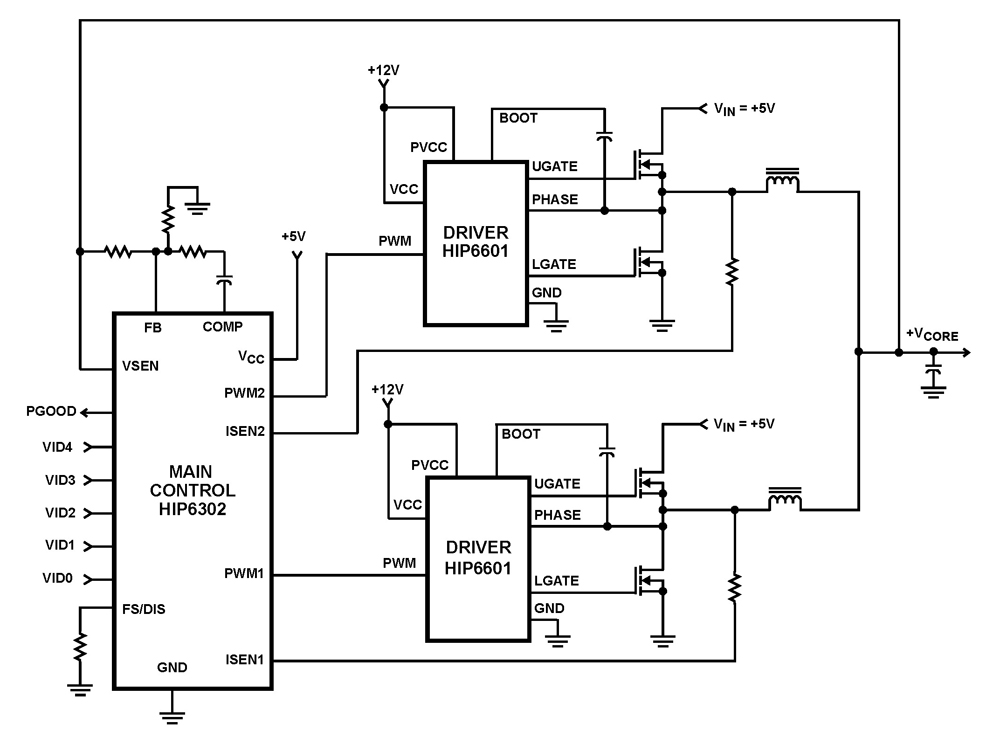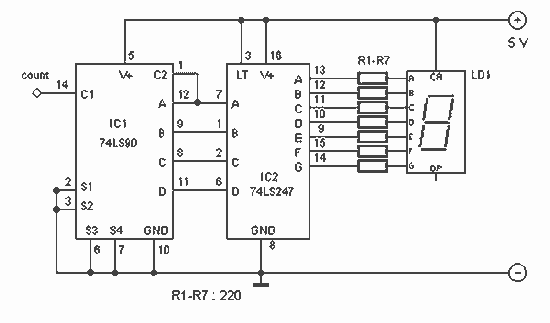
Low Voltage High Current Time Delay Circuit
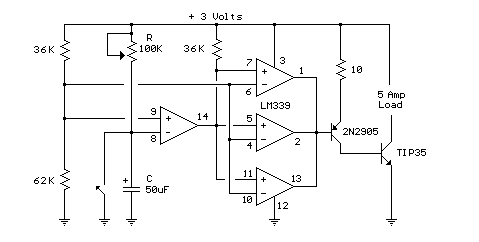
This circuit utilizes an LM339 quad voltage comparator to create a time delay and manage a high current output at low voltage levels. Approximately 5 amps of current can be sourced using a pair of fresh alkaline D batteries. Three of the comparators are connected in parallel to control a medium power PNP transistor (such as the 2N2905 or a similar model), which subsequently drives a high current NPN transistor (like the TIP35 or a comparable variant).
The schematic features an LM339 quad voltage comparator, which is a versatile component used in various applications due to its ability to compare two voltage levels and produce a digital output. In this configuration, the LM339 is employed to generate a time delay by comparing the voltage across a timing capacitor against a reference voltage. The output of the comparator changes state when the voltage reaches the predetermined threshold, effectively initiating the delay function.
The circuit is powered by two alkaline D batteries, providing a low-voltage source sufficient for the operation of the comparators and transistors. The choice of batteries allows for portability and ease of use in applications where higher current outputs are necessary.
In this design, three comparators from the LM339 are configured in parallel to amplify the output current. This arrangement enhances the drive capability of the circuit, allowing it to control a medium power PNP transistor, such as the 2N2905. The PNP transistor acts as a switch that regulates the current flow to the high current NPN transistor, such as the TIP35. The TIP35 is capable of handling significant current loads, making it suitable for applications requiring up to 5 amps.
The overall circuit design ensures that the high current output is managed efficiently while maintaining low voltage levels. Proper biasing and load considerations must be taken into account to ensure that the transistors operate within their safe limits. Additionally, incorporating protective components such as diodes can safeguard against back EMF in inductive loads. This circuit configuration is ideal for applications requiring time delay control and high current switching capabilities in low voltage environments.In this circuit a LM339 quad voltage comparator is used to generate a time delay and control a high current output at low voltage. Approximatey 5 amps of current can be obtained using a couple fresh alkaline D batteries. Three of the comparators are wired in parallel to drive a medium power PNP transistor (2N2905 or similar) which in turn drives a high current NPN transistor (TIP35 or similar)..
🔗 External reference
The schematic features an LM339 quad voltage comparator, which is a versatile component used in various applications due to its ability to compare two voltage levels and produce a digital output. In this configuration, the LM339 is employed to generate a time delay by comparing the voltage across a timing capacitor against a reference voltage. The output of the comparator changes state when the voltage reaches the predetermined threshold, effectively initiating the delay function.
The circuit is powered by two alkaline D batteries, providing a low-voltage source sufficient for the operation of the comparators and transistors. The choice of batteries allows for portability and ease of use in applications where higher current outputs are necessary.
In this design, three comparators from the LM339 are configured in parallel to amplify the output current. This arrangement enhances the drive capability of the circuit, allowing it to control a medium power PNP transistor, such as the 2N2905. The PNP transistor acts as a switch that regulates the current flow to the high current NPN transistor, such as the TIP35. The TIP35 is capable of handling significant current loads, making it suitable for applications requiring up to 5 amps.
The overall circuit design ensures that the high current output is managed efficiently while maintaining low voltage levels. Proper biasing and load considerations must be taken into account to ensure that the transistors operate within their safe limits. Additionally, incorporating protective components such as diodes can safeguard against back EMF in inductive loads. This circuit configuration is ideal for applications requiring time delay control and high current switching capabilities in low voltage environments.In this circuit a LM339 quad voltage comparator is used to generate a time delay and control a high current output at low voltage. Approximatey 5 amps of current can be obtained using a couple fresh alkaline D batteries. Three of the comparators are wired in parallel to drive a medium power PNP transistor (2N2905 or similar) which in turn drives a high current NPN transistor (TIP35 or similar)..
🔗 External reference
